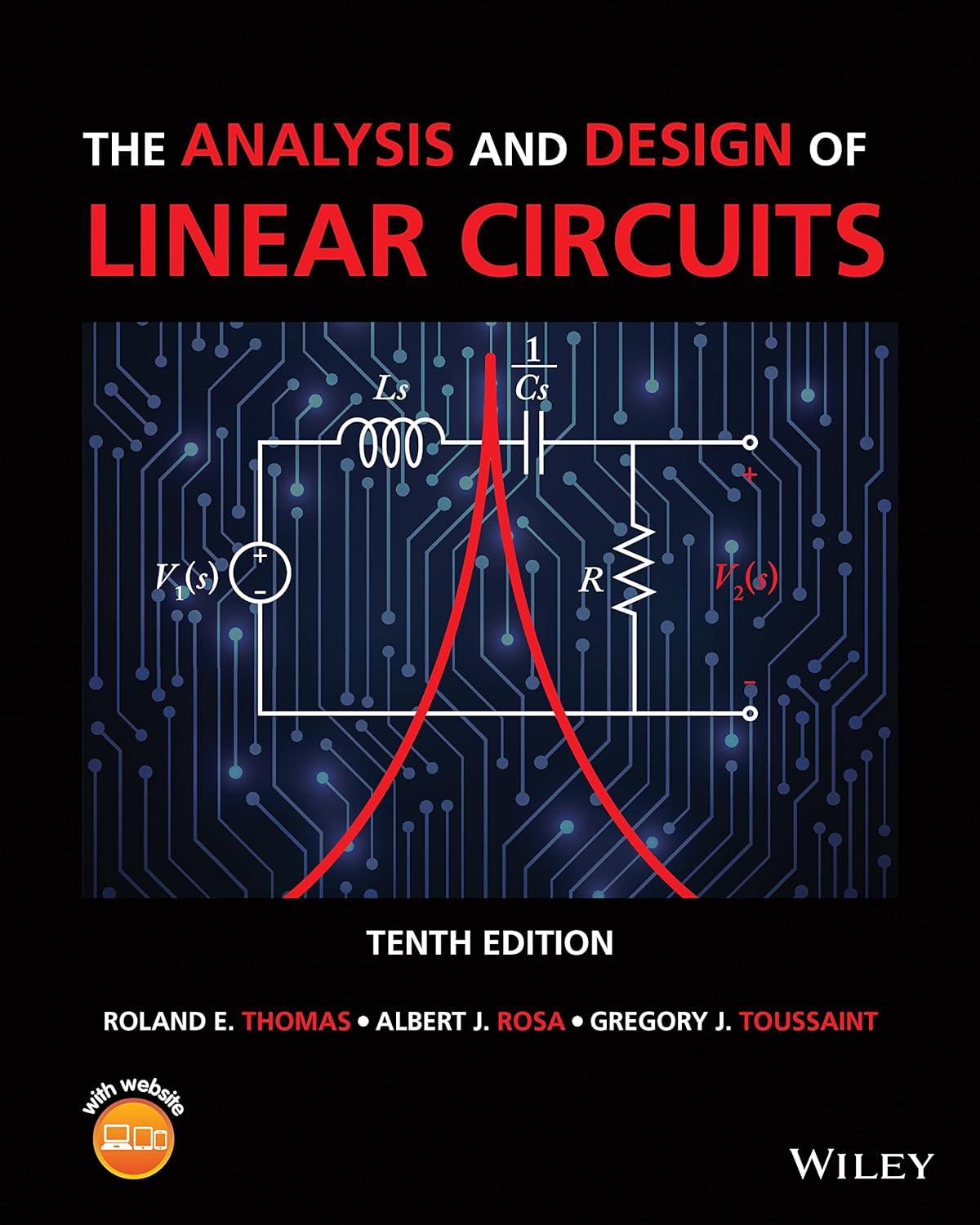A circuit designer often is faced with deciding which analysis technique to use when attempting to solve
Question:
A circuit designer often is faced with deciding which analysis technique to use when attempting to solve a circuit problem. In this problem we will look at the circuit in Figure P11-7.3 and choose which technique is the better one to use for different analysis scenarios. Explain why you selected the technique you did.
(a) You need to calculate the circuit's transfer function \(T_{\mathrm{V}}\) ( \(s)=V_{2}(s) / V_{1}(s)\).
(b) The input is given as \(v_{1}(t)=5 \cos 1000 t \mathrm{~V}\) and you need to find \(v_{2 \mathrm{SS}}(t)\).
(c) The input is given as \(v_{1}(t)=5 \cos 1000 t \mathrm{~V}\) and you need to find \(i_{\text {XSS }}(t)\).
(d) The input is given as \(v_{1}(t)=V_{\mathrm{A}} \cos \cot \mathrm{V}\) and you need to find \(v_{2 S S}(t)\).
(e) The input is given as \(v_{1}(t)=170 \cos 377 t \mathrm{~V}\) and you need to find all of the voltages and currents in the circuit.
(f) You need to find the poles and zeros of the circuit.
(g) You need to find if the current leads or lags the voltage across the two resistors when the input is \(5 \cos 1000 t \mathrm{~V}\).
(h) You need to determine what type of filtering the circuit performs.
(i) You need to select a load for maximum power when the input is \(v_{1}(t)=170 \cos 377 t \mathrm{~V}\).
Step by Step Answer:

The Analysis And Design Of Linear Circuits
ISBN: 9781119913023
10th Edition
Authors: Roland E. Thomas, Albert J. Rosa, Gregory J. Toussaint





